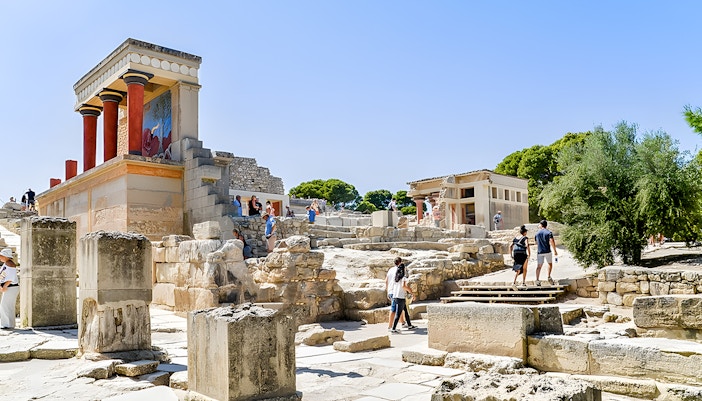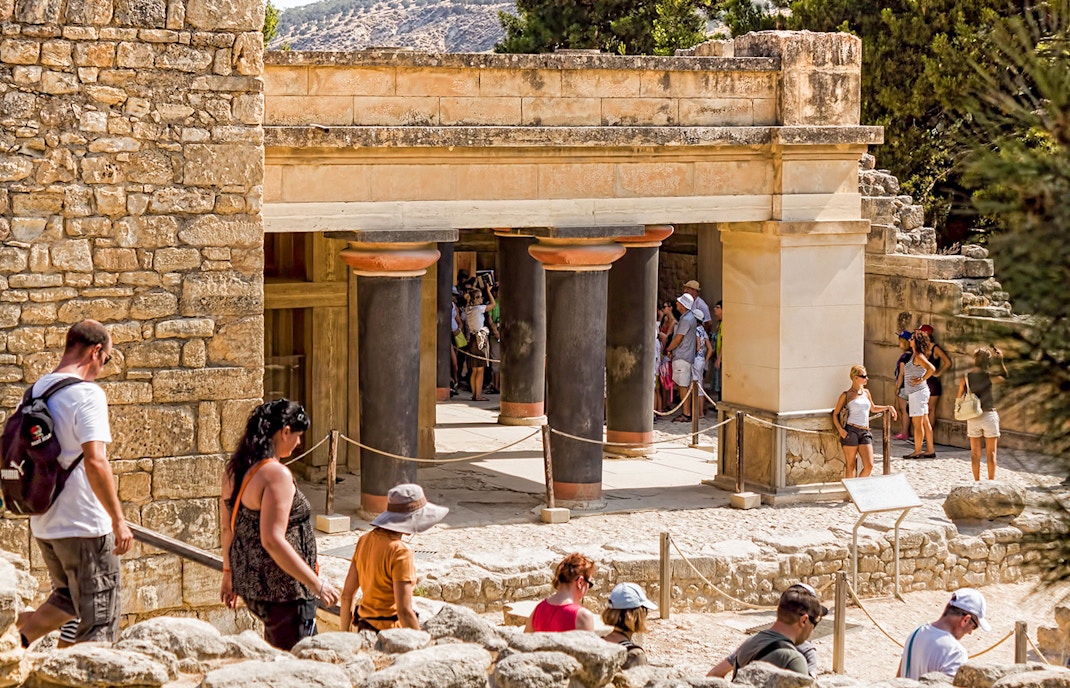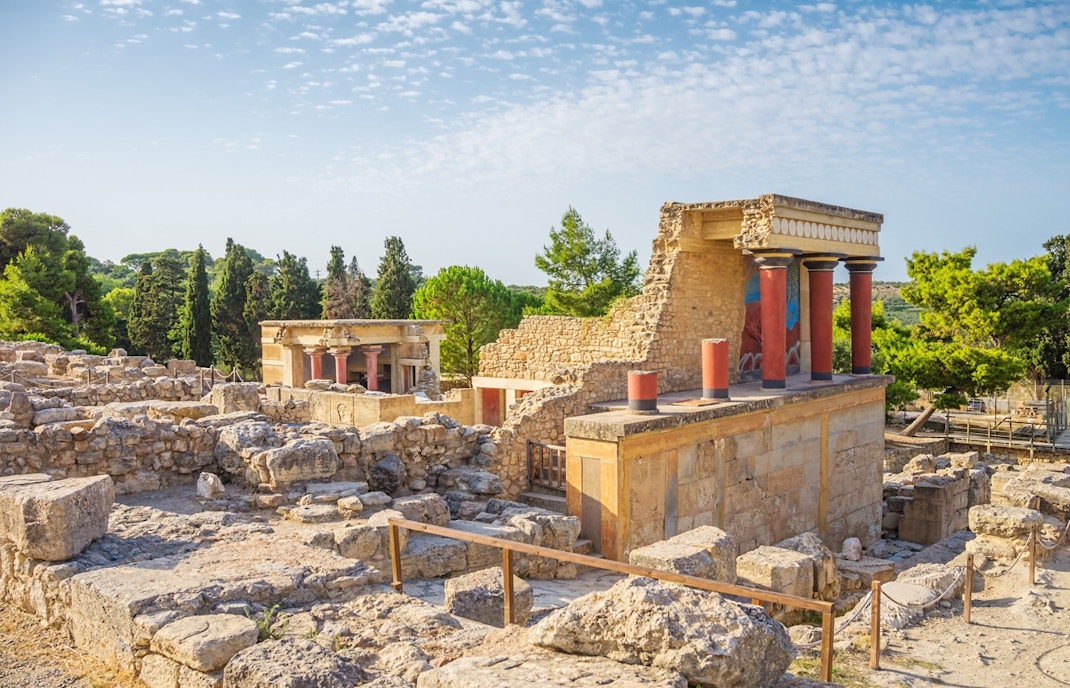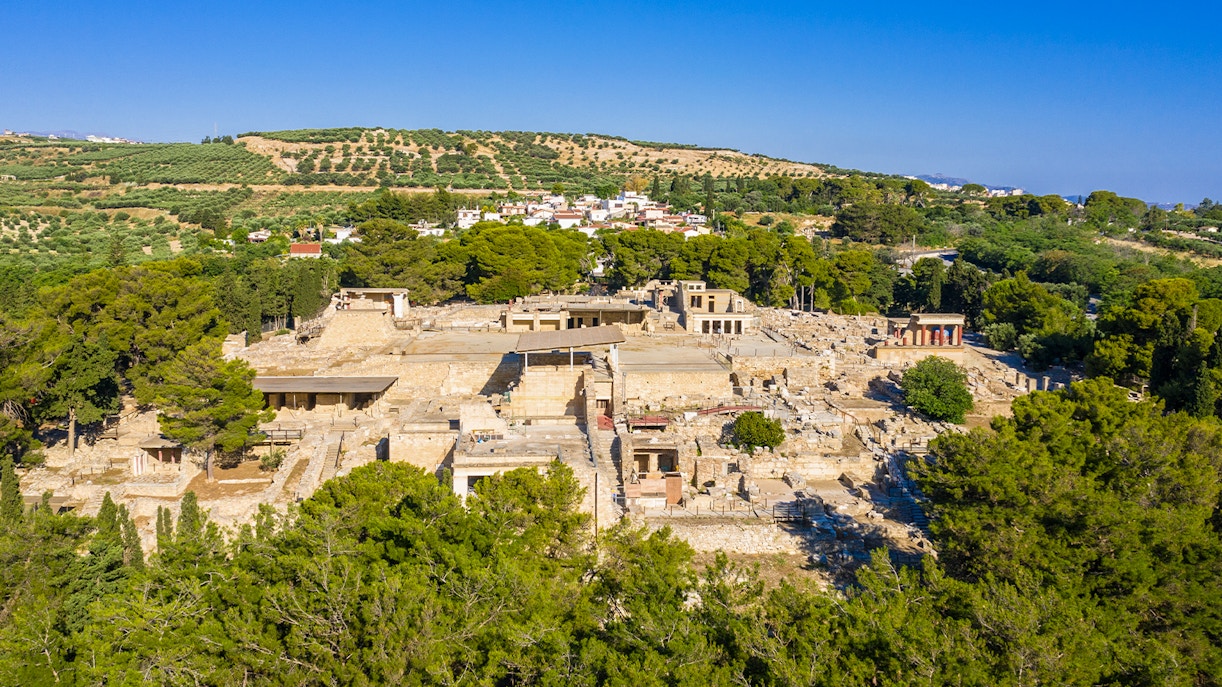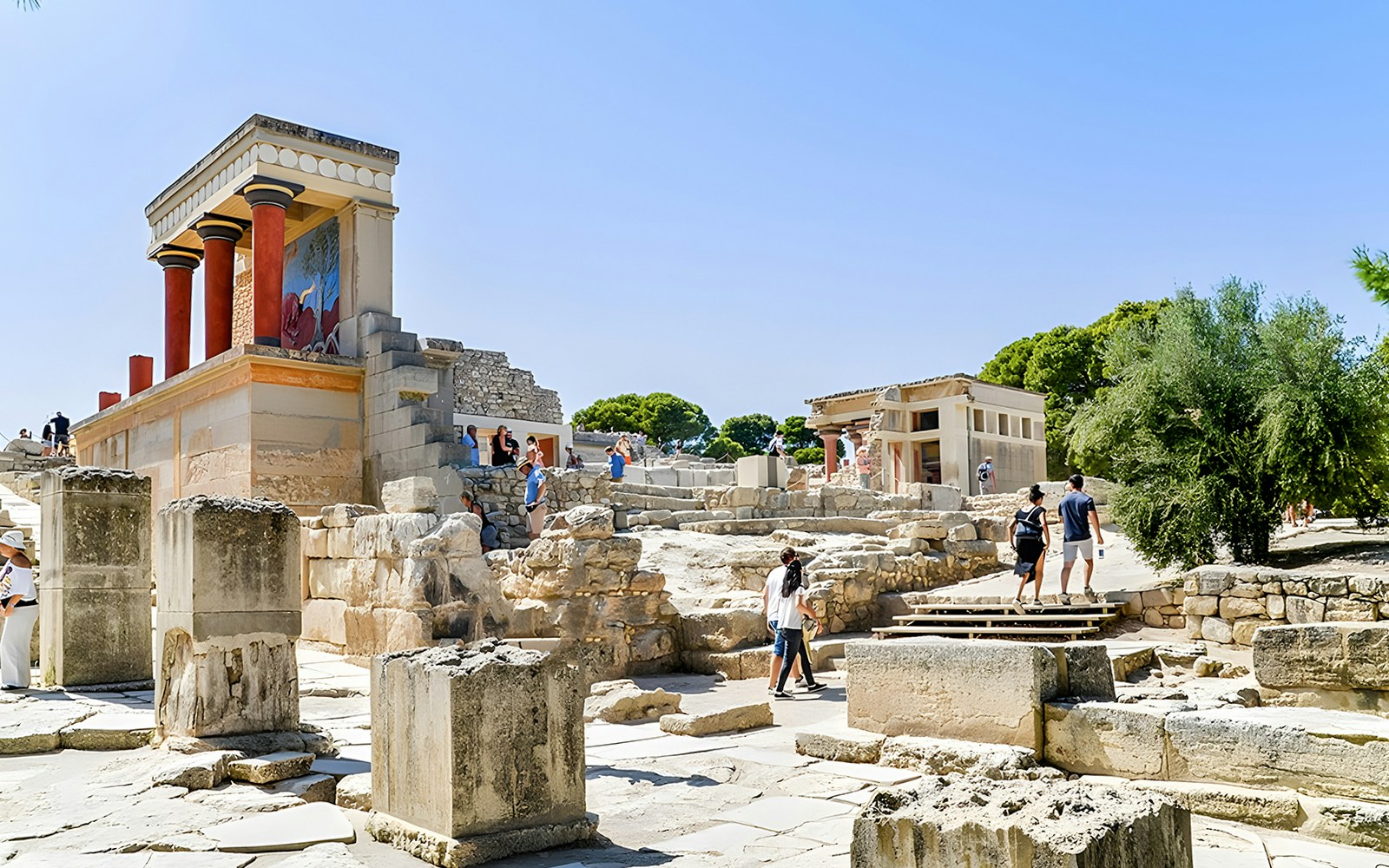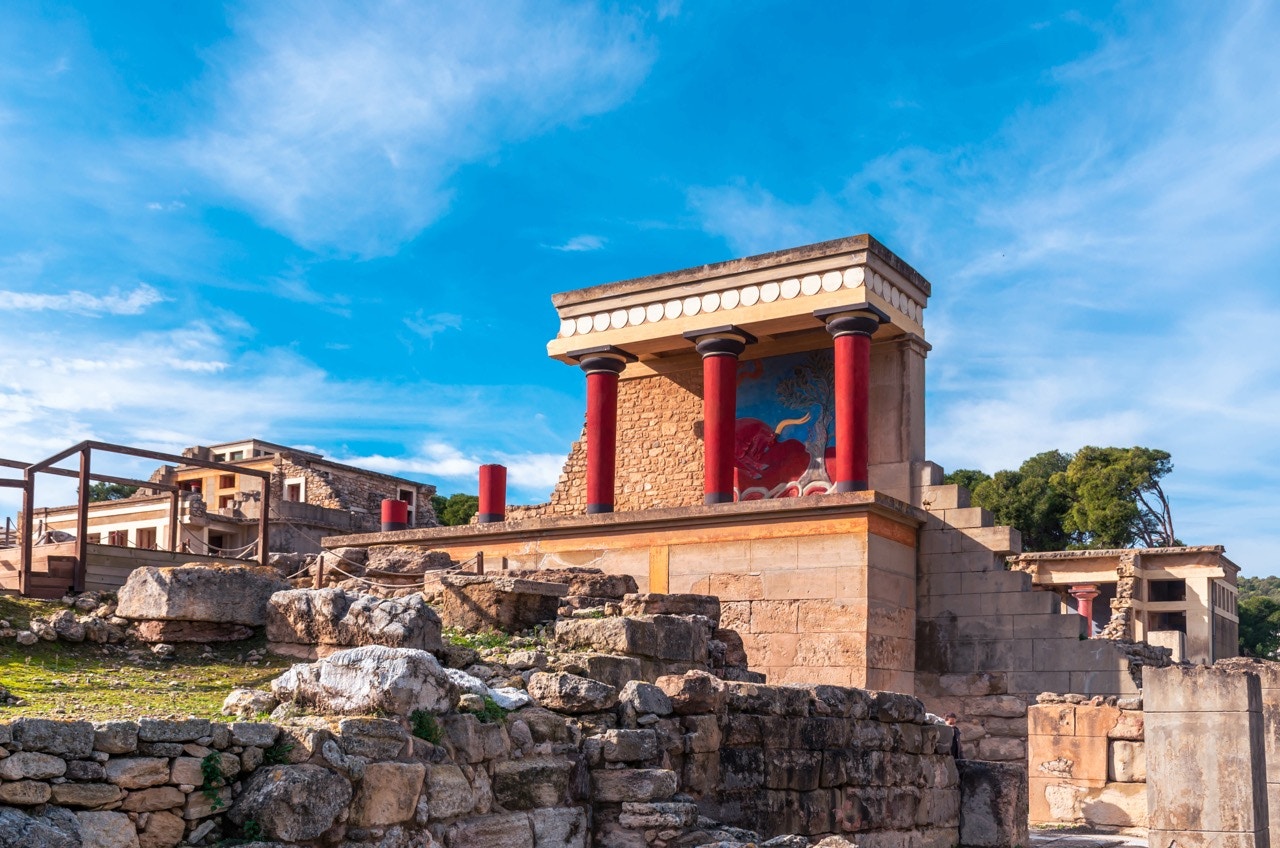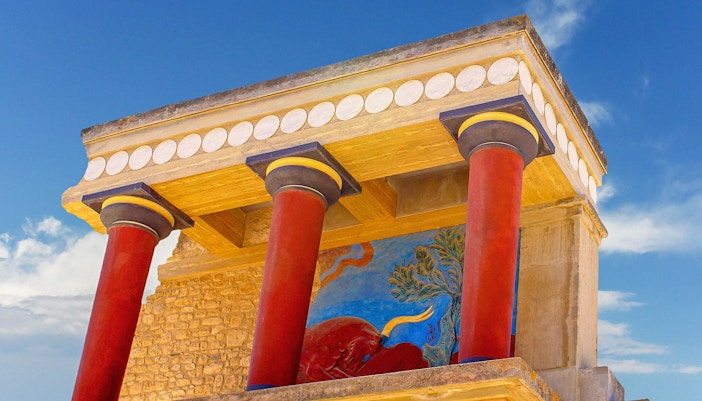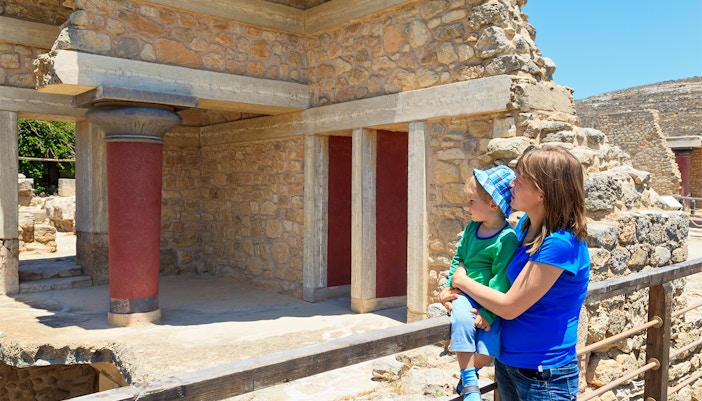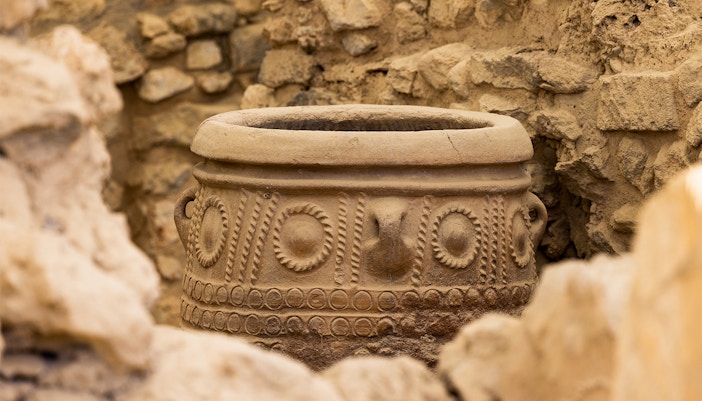The Knossos Palace, dating back to around 1900 BCE, was the core of Minoan society. The complex was a central hub for administration, religious rituals, and community gatherings, its walls bearing silent testimony to shifting power dynamics and changing social institutions.
Knossos through the ages | Celebrating Minoan heritage
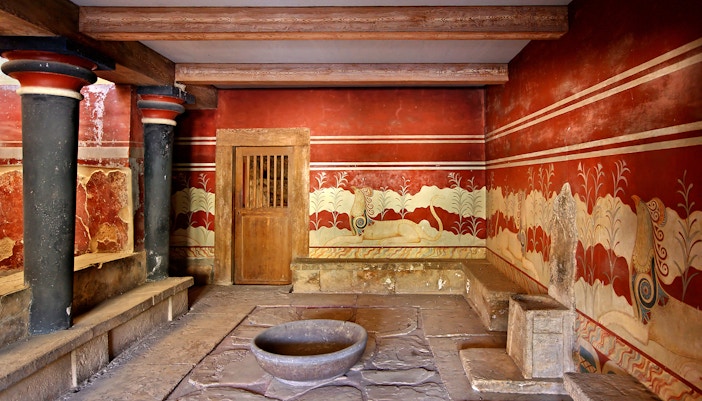
Heart of the Minoan civilization
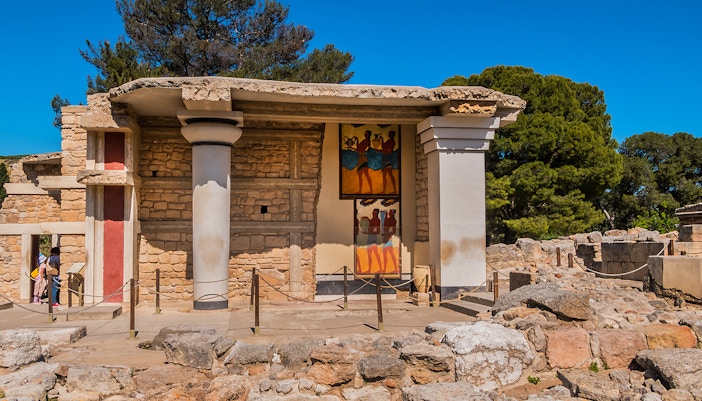
Advanced architectural innovations
